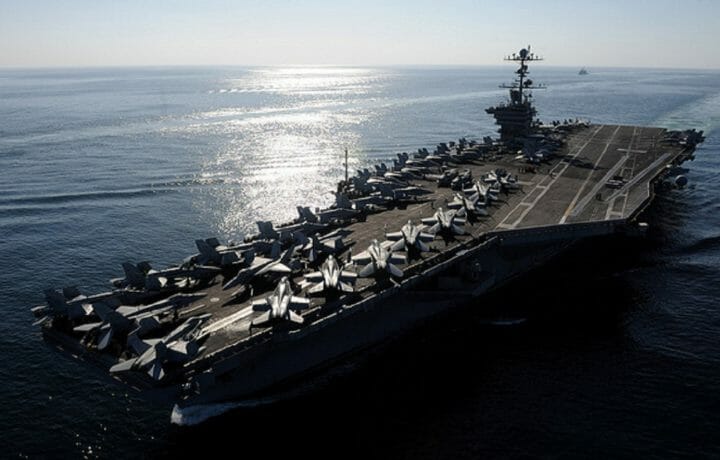“I couldn’t get away.” — Flock of Seagulls
Iran is misbehaving again—escalating even—and many people either can’t see it, or won’t admit it. The “false flag” accusations are over the line.
On Thursday, someone attacked the commercial tankers Front Altair and Kokuka Courageous in the Gulf of Oman, the waters on the Indian Ocean side of the Straits of Hormuz. The U.S. government insists that Iran is responsible. Others want more proof. Short of a confession from Ayatollah Khamenei, what proof would they find acceptable?
While there are certainly unanswered questions surrounding the incident, those trying to compare this to the notorious Gulf of Tonkin incident that sparked full-fledged U.S. involvement in Vietnam should probably dial it back a little.
What we know
The Front Altair and Kokuka Courageous both suffered some sort of attack, setting each on fire and causing the crews to abandon ship. An American destroyer, the USS Bainbridge, made way to the area, taking the crew of the Kokuka on board. The 21 sailors had taken shelter from their burning vessel on a nearby tug.
Intertanko, the International Association of Independent Tanker Owners, said that the two vessels were attacked “at or below the waterline, in close proximity to the engine room.” The U.S. government insists the weapon of choice was a “limpet mine,” a magnetic explosive that attaches to the hull of a ship, to be detonated later.
Video footage from the U.S. Central Command shows a small patrol boat (of a type that Iran is known to use) pulling alongside the disabled Kokuka and removed something from the side of the hull. The U.S. says it was an unexploded limpet mine.
Who else could it be?
The online sleuths at Bellingcat confirm that the CENTCOM video is indeed the Kokuka and what appears to be an Iranian Gashti class patrol boat. The Iranian Revolutionary Guards Corps—the organization the Trump Administration has declared to be a terrorist organization—has put its Gashti class boats on display in the past, so there can be little doubt that the boat in the video is Iranian, most likely IRGC.
We can debate what they’re removing from the side of the vessel. Bellingcat’s managing director wrote that, “Nothing presented as evidence proves that the object was placed there by the Iranians. The video shows only that the Iranians chose to remove it for an as yet unknown reason.”
This is too cute by half. No one has come up with any other plausible explanation for what the Iranians would be removing from the side of a tanker, or how they knew there was something there that needed to be removed in the first place. Bellingcat certainly doesn’t advance any theories for what might be happening in the video. Nor does any other doubter, for that matter.
The fact that the Kokuka’s captain thinks the ship was struck by something flying, and not something attached to the hull, ought to strengthen the idea that the Iranians are responsible, not weaken it.
Forget about “False Flags”
Occam’s Razor is the idea that the simplest explanation is usually the correct one. In this case, Occam suggests that the Iranians were removing an undetonated limpet mine.
Who else has the means and the motivation to attack ships leaving the Persian Gulf? Anyone who insists that the U.S. or Saudi Arabia is running a “false flag” operation”—a deliberate action to frame Iran and falsely create a jus ad bellum, a justification for war—should ask one question.
“Why, when so many people have publicly fretted that the U.S. or Saudi Arabia would arrange an attack to frame Iran, would they do just that?” It simply doesn’t make sense, especially in an era when Washington leaks like a rusty bucket.
The Iranians, on the other hand, aren’t exactly what you’d call rational actors. While their actions must make sense to them, they rarely make sense to us in the West. The announcement this morning that they would resume enriching uranium, despite the insistence of the rest of the world—and the Iranian government—that the Joint Comprehensive Plan of Action remains a valid agreement even without the U.S., ought to be further proof that the Iranian regime is self-destructive.
I still maintain that the U.S. is not headed for war in Iran, even though Iran seems to be itching for the fight and is bound and determined to provoke it. It will soon learn that there are worse things than war.




